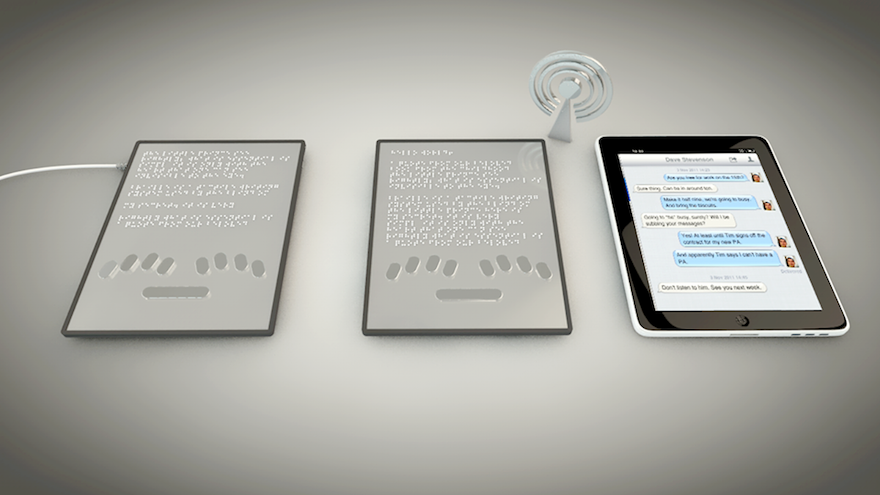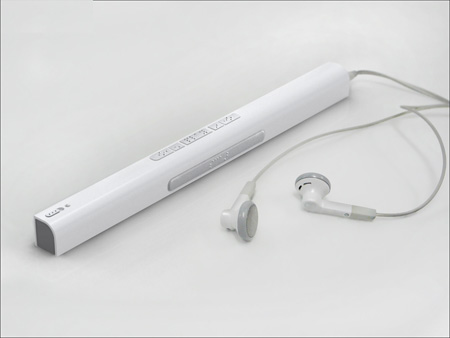Empowering Self-reliance With Assistive Innovation for the Blind
The combination of assistive modern technology right into the lives of individuals with aesthetic problems stands for a considerable development in advertising freedom and self-sufficiency. From cutting-edge screen viewers to advanced smart canes, these devices not just improve day-to-day navigation and communication yet also empower users to engage meaningfully in different elements of life. As we discover the myriad benefits and real-world applications of these technologies, it becomes critical to examine the hidden elements that contribute to their effectiveness and the capacity for future advancements in this important field.
Overview of Assistive Innovation

The development of assistive technology is grounded in principles of inclusivity and empowerment. Developments in software program, equipment, and sensory improvements supply individuals with options tailored to their details demands. From display visitors that transform text to speech, to tactile gadgets that communicate details through touch, these tools transform the means people involve with their surroundings.
In addition to sensible applications, assistive innovation promotes greater social addition and participation in various sectors, including education and employment (OCR devices for the blind). As research study and growth proceed to develop, the capacity for assistive modern technology to further improve the lives of visually impaired people continues to be promising, paving the means for a more fair culture where everybody can prosper
Kinds Of Assistive Instruments
A range of assistive tools have actually emerged to sustain individuals with visual disabilities, each made to fulfill particular requirements and improve daily performance. These tools vary from low-tech options to sophisticated advancements, providing diverse choices for individuals.
Low-tech tools consist of magnifiers and large-print materials that help in reading and writing. Braille devices, such as Braille styluses and slates, enable responsive reading and interaction. Alignment and flexibility aids, like white walking sticks, help individuals browse their atmosphere securely.
On the higher end of the range, digital magnification systems and screen visitors provide substantial assistance. Digital magnifiers permit customers to increase the size of text and pictures on screens, while display viewers transform electronic material into synthesized speech, promoting access to details on smart devices and computer systems.
Smartphone applications also play a crucial role, providing features like message recognition and navigation help. Wearable technology, such as smart glasses furnished with enhanced reality, is becoming an appealing tool to boost situational recognition.
Benefits of Assistive Technology
The combination of assistive modern technology substantially enhances the lifestyle for people with aesthetic disabilities. These modern technologies empower individuals by advertising freedom, enabling them to browse their environments more properly and perform day-to-day tasks with better convenience. Display readers and magnification software application permit individuals to accessibility electronic information, promoting educational and expert opportunities that may have previously been out of reach.
Moreover, assistive gadgets such as clever canes and general practitioners applications provide real-time navigation help, enhancing flexibility and safety. This increased freedom not only improves self-confidence however additionally urges social interaction, allowing customers to participate even more fully in their areas.
Assistive modern technology likewise assists in communication, assisting individuals get in touch with others via voice recognition and text-to-speech applications. This capability is essential for preserving relationships and accessing important info.
In addition, the modification choices offered with lots of assistive technologies guarantee that individuals can tailor tools to their certain needs, further improving functionality and effectiveness. On the whole, the advantages of assistive innovation for individuals with visual problems are extensive, advertising a more inclusive culture where every person can pursue their goals and ambitions.
Study and Success Stories
Highlighting the transformative impact of assistive modern technology, many study highlight how people with aesthetic impairments have efficiently incorporated these devices into their daily lives. One engaging instance includes an university pupil that made use of screen analysis software program to browse academic materials and on the internet sources successfully. This modern technology not only promoted her education and learning however additionally improved her confidence in joining discussions and group projects.
Another study features an expert who uses a mobile phone application made for navigating and things recognition. By utilizing this application, he has restored autonomy in both his personal and work atmospheres, permitting him to commute individually and involve with colleagues better.
Additionally, a retiree shared her experience with braille e-readers, which allowed her to access a huge selection of literary works and remain connected with her community via book clubs.
These success stories highlight the crucial role of assistive innovation in fostering independence, boosting high quality of life, and promoting social combination for individuals with visual disabilities (Mobility aids for visually impaired users). By accepting these cutting-edge devices, customers can get rid of difficulties and take possibilities that add to their professional and personal gratification

Future Trends in Assistive Innovation
Innovation in assistive technology is positioned to redefine the landscape of assistance for people with visual problems. click here to read Arising trends emphasize the combination of article source man-made intelligence (AI) and artificial intelligence, which enhance the capability of devices that assist with navigating and info access. For example, AI-driven applications are now qualified of translating visual information in real-time, making it possible for customers to engage with their environment a lot more separately.
Additionally, the development of wearable innovation is progressing quickly. Smart glasses furnished with augmented reality (AR) can provide audio summaries of environments, transforming how users connect with public spaces. These gadgets not only promote autonomy yet likewise foster social inclusion.
In Addition, the Internet of Things (IoT) is making homes smarter, permitting smooth connectivity between assistive tools and day-to-day home appliances. This connection encourages users by enabling automated actions and voice-activated controls tailored to private needs.
Conclusion
To conclude, assistive technology plays an essential function in empowering individuals with aesthetic impairments by enhancing their freedom and involvement with their environments. The diverse series of gadgets and applications available not only facilitates navigation and communication however additionally advertises social assimilation and chances for individual and professional growth. As innovations continue in this field, the potential for boosting the high quality of life for those with aesthetic impairments will certainly increase, promoting better autonomy and empowerment.
